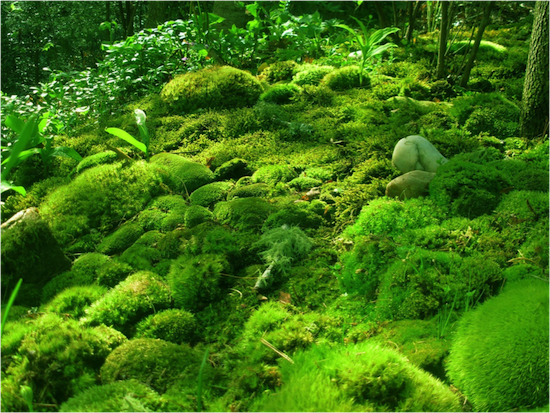
Plantae Notes

Plants are multicellular eukaryotes of the kingdom Plantae. They form a life form group that includes the flowering plants, conifers and other gymnosperms, ferns, club mosses, hornworts, liverworts, mosses and the green algae. Plants exclude the red and brown algae, and the fungi.
Green plants have cell walls containing cellulose and characteristically obtain most of their energy from sunlight via photosynthesis. Some plants are parasitic and have lost the ability to produce normal amounts of chlorophyll or to photosynthesize. Plants are also characterized by sexual reproduction, modular and indeterminate growth, and an alternation of generations, although asexual reproduction is also common.
The evolution of plants has resulted in increasing levels of complexity, from the earliest algal mats, through bryophytes, lycopods, ferns to the complex gymnosperms and angiosperms of today. The groups which appeared earlier continue to thrive, especially in the environments in which they evolved.
Evidence suggests that an algal scum formed on the land some 1,200 million years ago, but it was not until the Ordovician Period, around 450 million years ago, that land plants appeared. These began to diversify in the late Silurian Period, around 420 million years ago. By the middle of the Devonian Period most of the features recognised in plants today were present, including roots, leaves and secondary wood, and by late Devonian times seeds had evolved. Late Devonian plants had reached a degree of sophistication that allowed them to form forests of tall trees.
Evolutionary innovation continued after the Devonian period. Most plant groups were relatively unscathed by the end-Permian extinction event, although the structures of communities changed. This may have set the scene for the evolution of flowering plants during the Triassic Period, commencing 250 million years ago, which exploded in the Cretaceous and Tertiary. The latest major group of plants to evolve were the grasses, which became important in the mid Tertiary, from around 40 million years ago. The grasses, as well as many other groups, evolved new mechanisms of metabolism to survive the low CO2 and warm, dry conditions of the tropics over the last 10 million years.
Vascular plants first appeared during the Silurian period, and by the Devonian had diversified and spread into many different terrestrial environments. They developed a number of adaptations that allowed them to spread into increasingly more arid places. Root systems capable of obtaining soil water and nutrients also evolved during the Devonian.
The first seed plants were gymnosperms (seed ferns). They firts appeared in the Devonian and diversified through the Carboniferous. Seed plants can survive and reproduce in extremely arid conditions, because they are not dependent on free water for the movement of sperm. Four surviving groups remain widespread now, particularly the conifers, which are dominant trees in several biomes.
Plant fossils include roots, wood, leaves, seeds, fruit, pollen, spores, phytoliths, and amber (the fossilized resin produced by some plants). Fossil land plants are recorded in terrestrial, lacustrine, fluvial and nearshore marine sediments. Pollen, spores and algae are used for dating sedimentary rock sequences. The remains of fossil plants are not as common as fossil animals, although plant fossils are locally abundant in many regions worldwide.
The Coal measures are a major source of Paleozoic plant fossils, with many groups of plants in existence at this time. The fossilized remains of conifer and angiosperm roots, stems and branches may be locally abundant in lake and inshore sedimentary rocks from the Mesozoic and Cenozoic eras. Petrified wood is common in some parts of the world, and is most frequently found in arid or desert areas where it is more readily exposed by erosion. Petrified wood is often heavily silicified (the organic material replaced by silicon dioxide), and the impregnated tissue is often preserved in fine detail. Fossil forests of petrified wood have been found in all continents.
Fossils of seed ferns such as Glossopteris are widely distributed throughout several continents of the Southern Hemisphere, a fact that gave support to Alfred Wegener's early ideas regarding Continental Drift theory.